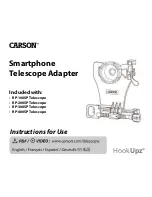
Refrigeration Maintenance (Rev. 04/02)
58
2.
Use the Service Test Mode to run the unit in high speed
cool. Refer to the appropriate Operation and Diagnosis
Manual for specific information about the Service Test
Mode.
3.
Operate the unit in high speed cool long enough to sta-
bilize system pressures and reduce the box temperature
to approximately 60 F (16 C) or colder.
4.
Observe discharge pressure and cover the condenser to
increase the discharge pressure approximately 75 to
100 psi (500 to 690 kPa) above observed pressure.
NOTE: If the ball and liquid level in the receiver sight
glass drops during step #4, the unit is not overcharged
and it is not necessary to complete the procedure.
5.
Remove the condenser cover to rapidly reduce dis-
charge pressure.
6.
Observe the receiver tank sight glass and the unit dis-
charge pressure.
7.
By the time the discharge pressure drops approximately
50 psi (345 kPa), the ball in the receiver tank sight glass
should begin to move and the liquid level should drop.
a.
When the discharge pressure stabilizes, the ball
and liquid level will rise.
b.
If the ball will not begin to move or the liquid level
will not drop, the unit most likely has an over-
charge of refrigerant. The refrigerant level should
be adjusted.
To adjust the refrigerant level:
1.
Stop the unit and remove some refrigerant with an
approved refrigerant recovery device such as the
COLLECTOR (P/N 204-884).
2.
Perform a refrigerant level check and repeat the over-
charge test.
3.
If the liquid level is low, add refrigerant as follows:
a.
Connect a refrigerant tank to the gauge manifold
service line and purge the line.
b.
Mid seat the compressor suction service valve.
c.
Set the refrigerant tank for liquid removal and open
the hand valve.
d.
Operate the unit in high speed cool.
e.
Observe the suction pressure and slowly open the
gauge manifold low pressure hand valve to allow
liquid refrigerant to flow into the compressor suc-
tion service valve.
f.
Control the liquid flow so the suction pressure
increases approximately 20 psi (138 kPa).
g.
Maintain a discharge pressure of at least 275 psi
(1896 kPa) while adding refrigerant.
h.
Close the hand valve on the refrigerant tank when
the liquid level approaches the top of the receiver
sight glass.
4.
Repeat the overcharge test.
Moisture Indicating Sight Glass
The receiver tank is equipped with a moisture indicating
sight glass. The outer edge of the sight glass has a colored
ring approximately 0.1 in. (2.5 mm) thick. The color of the
ring indicates the moisture content of the refrigerant, but it
is not completely reliable.
Green = Dry
Chartreuse = Caution
Yellow = Wet
Summary of Contents for SB-III 30 SR+
Page 4: ......
Page 8: ......
Page 10: ...ii ...
Page 14: ...4 ...
Page 24: ...Unit Description Rev 04 02 14 Unit Photos Front View AGA231 ...
Page 28: ...18 ...
Page 66: ...56 ...
Page 98: ...88 ...
Page 110: ...100 ...
Page 111: ...101 Early Model Coiled Wire Fuse Link Wiring Schematic ...
Page 112: ...102 Early Model Coiled Wire Fuse Link Wiring Diagram Page 1 of 4 ...
Page 113: ...103 Early Model Coiled Wire Fuse Link Wiring Diagram Page 2 of 4 ...
Page 114: ...104 Early Model Coiled Wire Fuse Link Wiring Diagram Page 3 of 4 ...
Page 115: ...105 Early Model Coiled Wire Fuse Link Wiring Diagram Page 4 of 4 ...
Page 116: ...106 Late Model Fuse Link in Battery Cable Wiring Schematic ...
Page 117: ...107 Late Model Fuse Link in Battery Cable Wiring Diagram Page 1 of 4 ...
Page 118: ...108 Late Model Fuse Link in Battery Cable Wiring Diagram Page 2 of 4 ...
Page 119: ...109 Late Model Fuse Link in Battery Cable Wiring Diagram Page 3 of 4 ...
Page 120: ...110 Late Model Fuse Link in Battery Cable Wiring Diagram Page 4 of 4 ...
















































